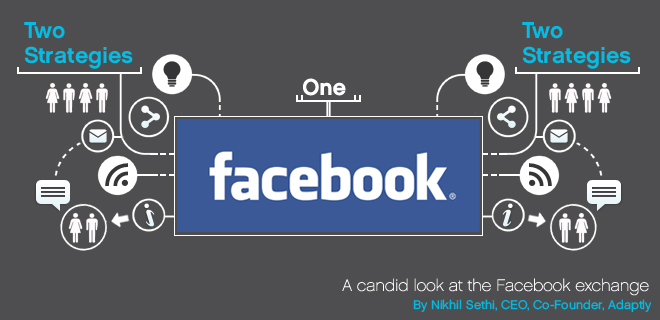
The world of Social Media advertising continues to evolve at an unprecedented pace, which, at times, can leave brands confused and unsure of the best strategy for them.
Given the recent announcement about the launch of Facebook’s RTB Exchange, a wealth of opportunities have been opened up to brands.
However, it also flags questions about how these new features and tactics will work and what it means in relation to the definition of ‘Social advertising success’.
The first strategy – and primary goal – with any social media budget remains to continue to grow and nurture engaged audiences and a community online. The overarching power of Facebook lies not just in the pure ability to serve a highly targeted impression to an individual, but also to retain that person within a social environment and communicate with them on a consistent, ‘Always On’ basis via rich, compelling content.
There are already countless examples of brands that are doing this well (and many not doing this so well) and it’s clear that because this potentially powerful approach utilises certain native advertising units including page posts, sponsored stories, and both the desktop and mobile news feeds, brands have an unprecedented opportunity to become seamlessly integrated with the way people use, and interact within, Facebook – when executed well and with true social objectives in mind, the brand becomes part of the conversation.
This strategy can take advantage of the powerful targeting capabilities that lie within Facebook’s first party data, using the social and interest graph to better understand audiences as a whole before crafting acquisition and communication strategies that will continue to support the growth of, and resonate with, an engaged audience/community. Once a thriving community exists, brands should look to deploy a persistent (and consistent) content strategy to engage with this audience and provide people with relevant information around the brand – thus building a brand story.
Through Adaptly’s proprietary technology, brands can employ Evergreen, using paid media in a creative way to make sure that the brand’s best quality content gets in front of the right people at the right time – ultimately paid media is only as good as the content behind it, and content is only as good as how many people it actually reaches.
With this strategy, the focus becomes building communities of people, messaging to them on an always-on basis, and focusing on making sure the right messages get in front of the right audiences. Increasingly we see brands having to more aggressively align their communications and advertising departments (and agencies) to support this evolution.
The second strategy builds upon how Facebook connects, or looks like to the rest of the Internet. The newly announced Facebook Exchange allows brands to do a couple of new things. As people visit various destinations throughout the web, brands can now take advantage of the time these people spend on Facebook with traditional display retargeting practices (albeit with Facebook specific ad units). When a user visits a travel site and is about to book a trip but doesn’t complete the transaction, if the user returns to Facebook an advertiser can now “follow” this person and place impressions to bring the person back to the travel site to potentially complete the booking.
This approach can be very powerful given the sheer size and volume of users on the Facebook platform, perhaps the largest retargeting pool available to online advertisers in the world, allowing brands to leverage this new source of inventory. When brands are considering their approach to Facebook they should be aware that it presents one platform with multiple use cases, allowing brands to take advantage of very exciting native ad units (sponsored stories, page posts, newsfeeds) that function across desktop and mobile in a fully integrated fashion.
These ad units represent the next major evolution in advertising as we know it. In addition, brands can now look for a simple way to engage with Facebook from a traditional display sense, helping connect Facebook with the rest of the Internet. Social media can be a confusing world for brands, but when done well and in a way that capitalises on all of the various uses of the platform, success looks great.